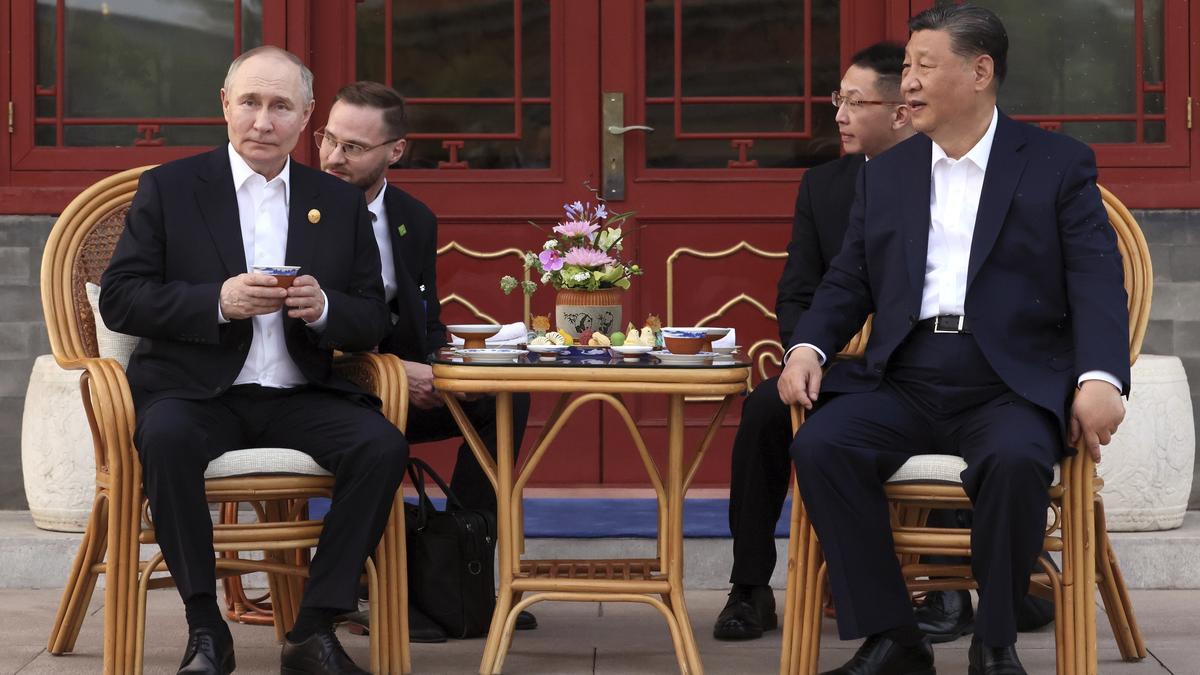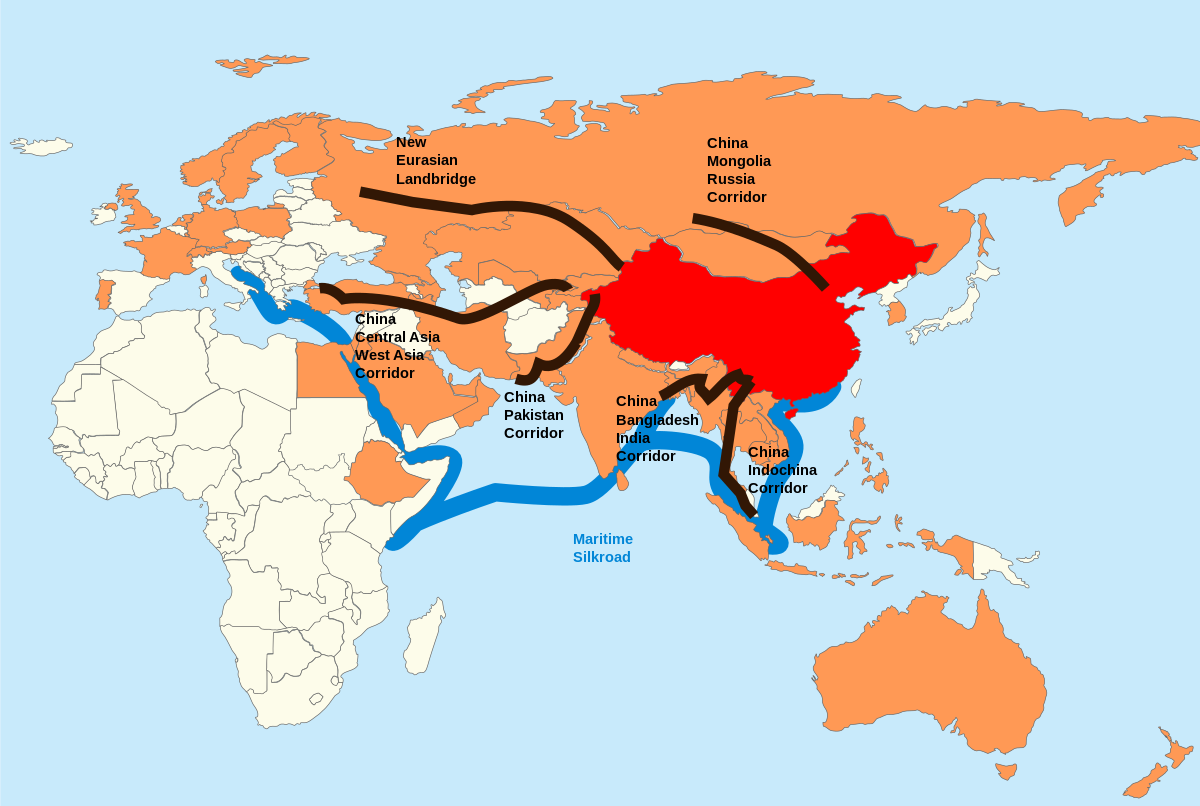A "No-Limit" Bond That Goes Beyond Mutual Understanding

Russian President Vladimir Putin and Chinese President Xi Jinping have had over 40 encounters over the previous 11 years, demonstrating their close relationship. Among their most important meetings to date was their recent summit held in Beijing on May 16–17, 2024, to celebrate the 75th anniversary of diplomatic ties. Their "no-limit" bromance has worldwide ramifications because to their significant geostrategic and geoeconomic importance, especially for India, which maintains intricate links with both countries.
Phases of Russia-China Ties in History
- 19th century: Czarist Russia expanded its borders to the Pacific, an area the Soviet Union continued to rule, by taking advantage of a weaker China. The two countries' complicated and frequently tense relationship began during this time.
- Early Communist Era: Ten years of "Comintern brotherhood" followed the People's Republic of China (PRC)'s founding in 1949. But this unity was shattered by political and ideological disagreements, particularly after China attacked India in 1962. The border dispute over the Ussuri River caused tensions to rise in 1969 and resulted in armed hostilities.
- 1972: A Turn in the West: With the intention of weaning China away from the Soviet-led Eastern Bloc, U.S. President Richard Nixon made a momentous visit to Beijing in 1972, marking the start of the fourth phase. China had a pro-Western slant, having backed Deng Xiaoping's "four modernizations" on the grounds that economic growth would liberalize Chinese society. The West persisted in its involvement with China in the wake of the 1989 Tiananmen Square crackdown, offering investments, technology transfers, market access, and diplomatic backing, turning China into the "World's Factory."
- Post-Soviet Era: Relations between Russia and China deteriorated with the fall of the Soviet Union as the Russian Federation, the Soviet replacement, lost a lot of its sway in Central Asia, which turned into a new front in China's geopolitical rivalry.
- Phase I: Convergence of Strategy Against the West The current phase started in 2012 when the United States became concerned about China's increasing assertiveness. This led to a strategic "pivot to Asia" and measures to contain China's growth. China's desire for a tighter partnership with Russia was prompted by growing strain with the West. After their Beijing Summit in 2022, they proclaimed their relationship to have "No Limits." Russia was further drawn into China's embrace by the invasion of Ukraine by Russia that followed and the harsh sanctions imposed on Moscow by the West. Due to their mutually antagonistic approach to the West, bilateral relations have significantly improved; in 2023, trade between the two countries reached $240 billion, up 26% from the year before.
The Main Results of the Beijing Summit
- commercial and Military Cooperation: Although trade numbers were remarkable, particular commercial, financial, and military linkages were conspicuously absent from the 7,000-word Joint Statement released following the summit. This quiet could be an attempt to hide fundamental differences between China and Russia or to avoid drawing the wrath of the West.
- Strategic Focus: The United States was sharply chastised in the joint declaration, which accused it of pursuing "dual containment" against China and Russia and denounced its "Indo-Pacific Strategy" as disruptive. This suggests that Beijing and Moscow are clearly aligned strategically against what they see as American hegemony.
Immediate Effects
- Enhanced Bilateral Collaboration: It is probable that the summit will result in heightened, albeit covert, collaboration between China and Russia in the near future. This includes supplying Russia's military operations in Ukraine with dual-use materials. China might demand improved conditions from Russia in exchange for access to vital Russian technology like avionics, nuclear power, and space exploration, as well as mining rights in Siberia.
- China's Strategic Gains: China may be able to obtain advantageous deals and increase its influence over Central Asia by taking advantage of Russia's dependence. The ongoing crisis in Ukraine maintains Russia dependent on China and distracts the United States, giving China greater leeway to consolidate its hegemony in Asia.
Prolonged Consequences
- Geopolitical and Economic paradoxes: China's dual engagement with the West and Russia eventually poses fundamental paradoxes that can become intolerable. China gains from its economic connections with the West, but if Western pressure persists, it may be forced to support Russia more firmly, which might spark a new Cold War.
- Emerging Global Polarization: With China spearheading a rival global framework to the United States-dominated post-World War II order, the summit may mark the beginning of a new age of global polarization. The Belt and Road Initiative, the Shanghai Cooperation Organization, the Asian Infrastructure Investment Bank, and the BRICS expansion are early indicators. These organizations, which have a strong Chinese influence, seek to establish a respectable challenge to Western domination.

India's impact
- India is confronted with a range of strategic problems and opportunities arising from the dynamic interaction between China and Russia. Given the historical turbulence of relations between China and Russia, India needs to carefully evaluate the scope and longevity of this period. Because of the sanctions and the war in Ukraine, Moscow is now more dependent on China economically and militarily, which raises questions about China's possible hegemony over Russia.
- Defense Dependencies and Strategic Autonomy: Given the continuous border tensions between China and Russia, India, which is significantly dependent on Russia for defense supplies, needs to take into account the implications of Russian susceptibility to Chinese pressure. Despite being Russia's biggest defense market, India's supply chain may not be entirely trustworthy.
- Navigating Global Architectures: India, which has misgivings about the current international system, needs to assess if China's suggested alternatives serve its interests. India has options thanks to its hard-earned strategic autonomy over the past few decades, but using its advantages would need a strategic and practical approach.
In summary
When looking back on the previous Cold War, India's socioeconomic progress was hampered because it frequently put its moral principles ahead of its fundamental national interests. India needs to take a clear-eyed approach in the upcoming global polarization, concentrating on its long-term national goals and making use of its strategic autonomy.
India should take a more discerning and flexible stance, making use of its considerable worldwide clout to negotiate the changing geopolitical terrain. India needs to be committed to its basic goals even as new chances present themselves in order to make sure it plays a major part in determining the future of the world order.
